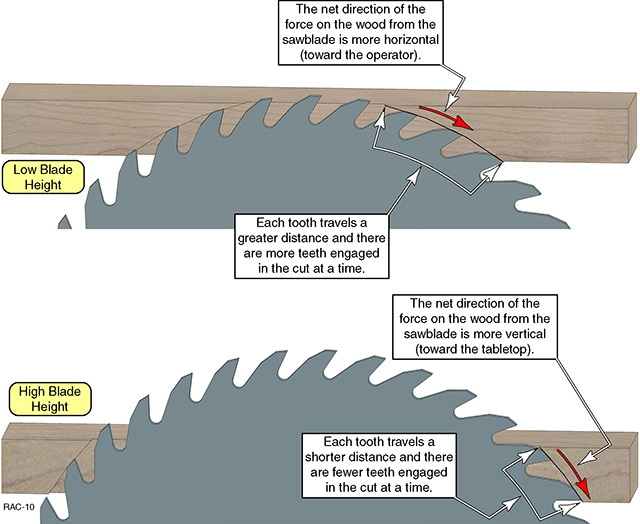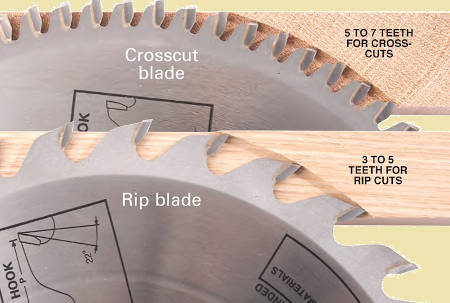When it comes to table saws, one important question often pops up: “What height should a table saw be?” Let’s dive into this topic and find out the answer.
Have you ever wondered why the height of a table saw matters? Well, it’s all about ensuring safety and efficiency while working with this powerful tool.
But fear not, my young apprentice! I’m here to guide you through the process of determining the ideal height for your table saw, so you can tackle your woodworking projects with confidence and precision. Let’s get started!
1. Stand in a relaxed position with your arms at your sides.
2. Bend your elbows at a 90-degree angle.
3. Measure the distance from the floor to your elbow.
4. Set the table saw height so that the surface is at or slightly below this measurement.
By adjusting the height of your table saw to match your body mechanics, you can ensure a more comfortable and efficient woodworking experience.

The Ideal Height for a Table Saw: Finding the Perfect Match
Introduction: A table saw is an essential tool for any woodworking enthusiast or professional. But have you ever wondered what height the table saw should be set at for optimal performance and safety? In this article, we will dive deep into the topic and explore the factors to consider when determining the ideal height for a table saw. Whether you are a seasoned woodworker or a beginner looking to set up your workshop, this guide will help you find the perfect match for your table saw.
1. Ergonomics and Comfort
When it comes to setting the height of your table saw, ergonomics is a key consideration. Working at the wrong height can result in discomfort and even potential injuries in the long run. It is recommended to set the table saw at a height that allows you to maintain a comfortable and natural stance. Typically, this means aligning the saw’s table surface with your wrists when your arms are at a 90-degree angle. This ensures that you can effortlessly guide the workpiece through the saw while maintaining good posture.
While the general rule of aligning the saw with your wrists is a good starting point, it is essential to consider your own height and preferences. Factors such as your height, the length of your arms, and your preferred working position all contribute to finding the ideal height. Experiment with different heights and angles to find what feels most comfortable and natural for you.
Keep in mind that adjusting the height of the table saw may require you to modify the surrounding workbench or build custom stands. It is worth the effort to ensure a comfortable and ergonomic setup that allows you to work efficiently and without strain.
2. Safety Measures
Ensuring a safe working environment should be a top priority when using a table saw. Setting the table saw at the correct height plays a significant role in reducing the risk of accidents and injuries. When the saw is set at the right height, it allows you to maintain proper control and visibility while operating the machine.
Setting the table saw too high can make it difficult to apply the necessary downward pressure on the workpiece, leading to slippage or kickback. On the other hand, a table saw that is too low can cause you to lean forward, compromising your balance and stability.
Another safety consideration is the position of the blade in relation to your body. You should ensure that the blade is at a height that allows for maximum control without the risk of accidental contact with your body or clothing. Follow the manufacturer’s guidelines and recommendations for setting the blade height to ensure optimal safety during operation.
3. Precision and Accuracy
Setting your table saw at the right height is crucial for achieving precise and accurate cuts. The height of the saw affects the way the blade interacts with the workpiece, ultimately determining the quality of the cuts you make. When the table saw is set at the correct height, you will experience minimal blade deflection, resulting in cleaner and more accurate cuts.
As a general guideline, the height of the saw should allow the blade to extend approximately 1/8 inch above the material being cut. This ensures that the blade penetrates smoothly without causing excessive friction or resistance. However, keep in mind that different cutting techniques and materials may require slight adjustments in the blade height.
It is also worth mentioning that the height adjustment mechanism of your table saw should be of high quality and easy to use. A precise and reliable height adjustment system saves you time and effort when fine-tuning the saw for different tasks and materials, allowing you to focus on the craftsmanship without any hassle.
Additional Tips and Considerations
4. Personal Preferences and Working Style
While there are guidelines and recommendations for setting the height of a table saw, it is important to remember that individual preferences and working styles can vary. Some woodworkers may prefer a slightly higher or lower table saw height based on their specific needs and comfort. Consider factors such as your preferred stance, the type of work you do most frequently, and any physical limitations you may have.
5. Mobility and Adjustability
If you frequently move your table saw or work on a variety of projects that require different setups, consider investing in a table saw with adjustable height or a mobile base. With an adjustable height feature, you can easily adapt the table saw to various working conditions and personal preferences. A mobile base allows you to move the table saw effortlessly around the workshop, eliminating the need to adjust the height every time you relocate the saw.
6. Seeking Expert Guidance
If you are unsure about the ideal height for your table saw or need personalized advice, consider consulting with experienced woodworkers or professionals in the industry. They can provide valuable insights and recommendations based on their own experiences and expertise, helping you make an informed decision.
By considering ergonomics, safety measures, precision, as well as personal preferences and professional advice, you can determine the ideal height for your table saw. Remember, finding the perfect match for your table saw is essential for a comfortable, safe, and enjoyable woodworking experience. Happy cutting!
Key Takeaways: What Height Should a Table Saw Be?
- The height of a table saw should be comfortable for the user to operate without straining their back or arms.
- Table saws should be set at a height where the user can maintain a straight and relaxed posture while cutting wood.
- As a general rule, the height of the table saw surface should be at the level of the user’s wrists when they are standing in a natural position.
- Adjustable table saw stands or workbenches can help ensure the table saw is at the right height for each user.
- It is important to consider personal preferences and body proportions when determining the optimal height for a table saw.
Frequently Asked Questions
Table saws are a versatile tool commonly used in woodworking. One important consideration when setting up a table saw is determining the proper height for it. This can greatly impact your comfort, safety, and precision while using the tool. In this section, we address some common questions regarding the ideal height for a table saw.
Q1: How do I determine the correct height for my table saw?
When determining the height of your table saw, it’s essential to consider your own body mechanics and comfort. A general guideline is to position the table saw so that the surface of the table aligns with your palms’ base when your arms are comfortably at your side. This ensures that you won’t have to strain or bend too much while operating the tool.
However, everyone’s height and preference differ, so don’t hesitate to make adjustments accordingly. You may want to start at a recommended height and test it out, making modifications until you find the most comfortable position for you.
Q2: How can the wrong table saw height affect my work?
If your table saw is not at the correct height for you, it can have several negative effects on your work. Firstly, an incorrect height may cause discomfort and strain on your back, neck, and arms, leading to fatigue and potentially increasing your risk of injury.
Additionally, an improperly positioned table saw can impact the accuracy of your cuts. If the table is too low, you may have trouble applying the right amount of pressure, resulting in uneven cuts. On the other hand, if the table is too high, you may struggle to maintain proper control and stability while cutting.
Q3: Are there any safety considerations when setting up the height of a table saw?
Ensuring the proper height of your table saw is not only about comfort and precision but also about safety. When the table saw is at the appropriate height, it allows you to maintain proper posture and control while operating the tool, reducing the risk of accidents.
It’s also important to ensure that the table saw is securely set up at the determined height, with stable support and a level surface. This helps prevent any wobbling or movement that could be hazardous during operation.
Q4: Can I adjust the height of my table saw?
Most table saws are designed with adjustable features that allow you to set the height according to your needs. These features typically involve adjusting the table saw’s base or the supporting legs. Refer to your table saw’s user manual for specific instructions on how to make these adjustments.
However, it’s worth noting that some portable or benchtop table saws may have limitations in terms of the height adjustments available. In such cases, you may need to use a sturdy platform or build a custom stand to achieve the desired height.
Q5: Are there any additional factors to consider when setting up the height of a table saw?
While your personal comfort and cutting precision are the primary factors in determining the height of your table saw, there are a few other considerations worth keeping in mind. One of them is the type of work you’ll be doing. For example, if you often work with larger or heavier materials, you may want to adjust the height to accommodate for ease of handling.
Another factor is the overall workspace and ergonomic setup of your workshop. Consider the height of surrounding surfaces and workbenches to ensure that the table saw’s height is compatible with the rest of your setup, allowing for comfortable and efficient workflow.

How Tall Should a Table Saw Stand Be?
Summary
So, what’s the ideal height for a table saw? Well, it depends on a few things. First, you need to consider your own height and comfort. The table saw should be positioned so that you can easily reach the controls and see the workpiece without straining your neck. Second, the height should also allow for proper alignment between the blade and the work surface to ensure accurate cuts. Lastly, it’s important to follow the manufacturer’s recommendations as they may provide specific guidelines for the ideal height. By considering these factors, you can find the right height for your table saw that maximizes safety and efficiency.
Remember, using a table saw can be a fun and useful tool, but it’s important to prioritize safety and follow proper guidelines. Always wear safety gear like goggles and gloves, and make sure to read and understand the instruction manual before operating the table saw. So, go ahead and get woodworking, but do it safely!
